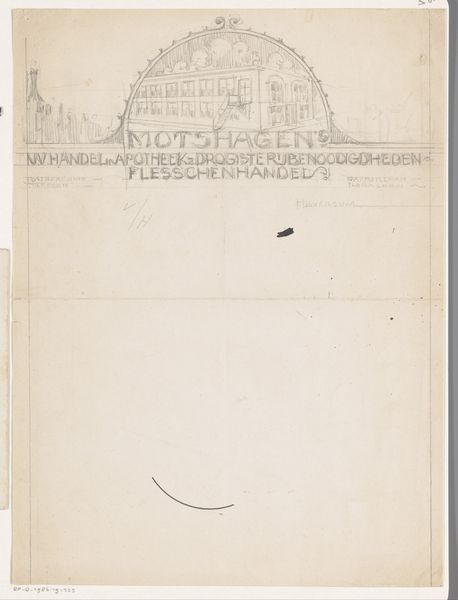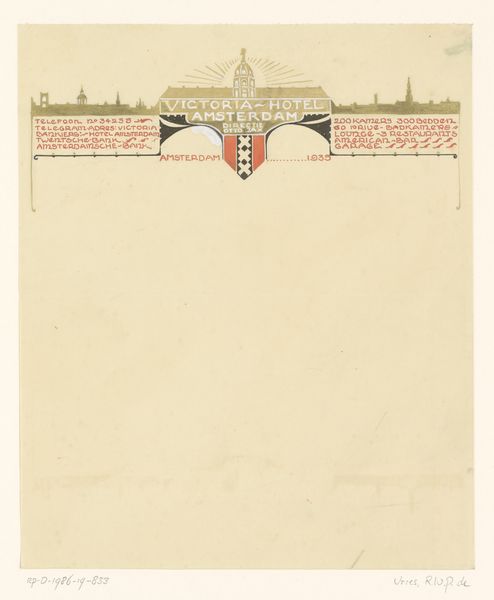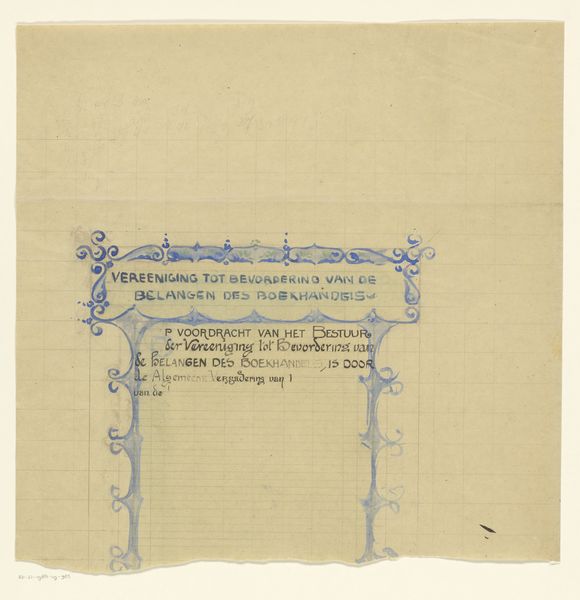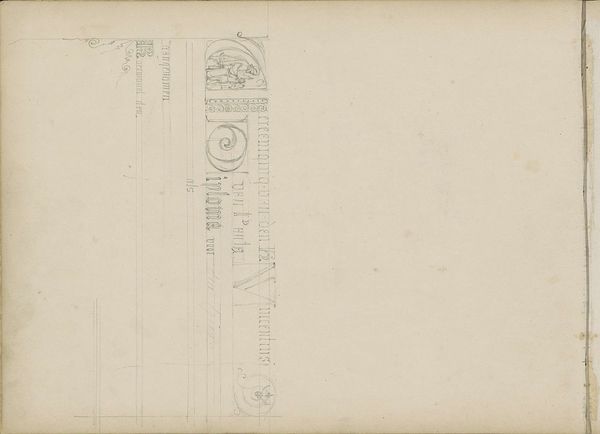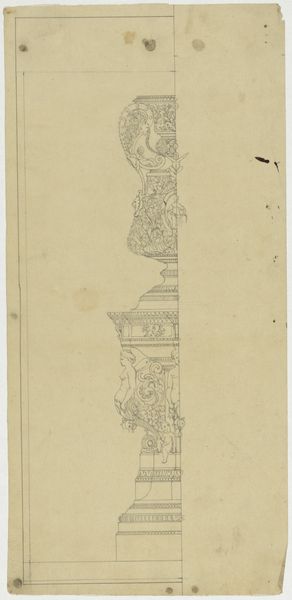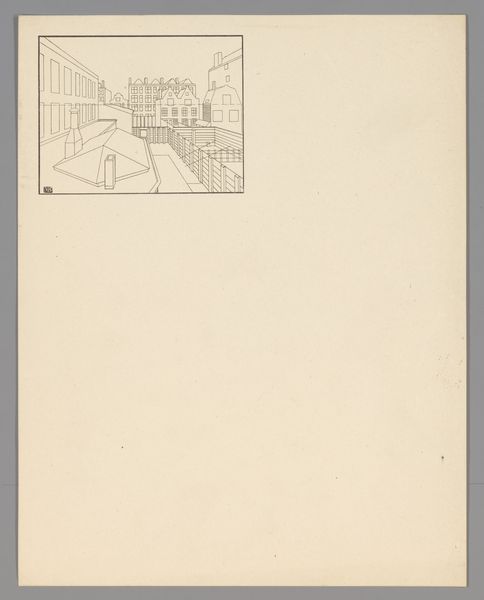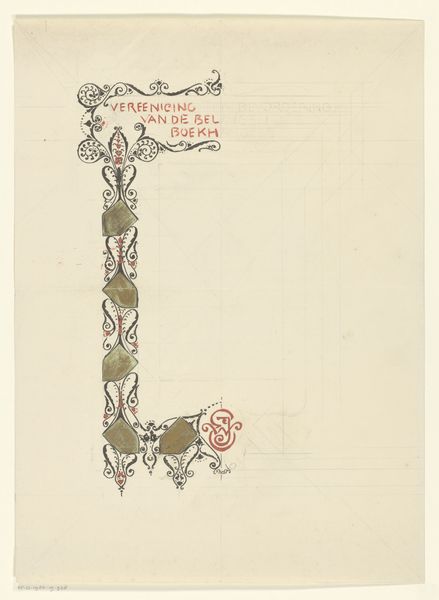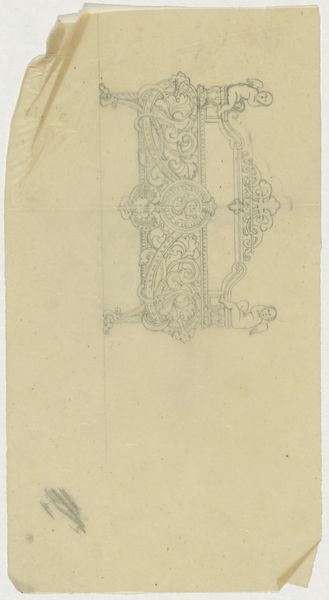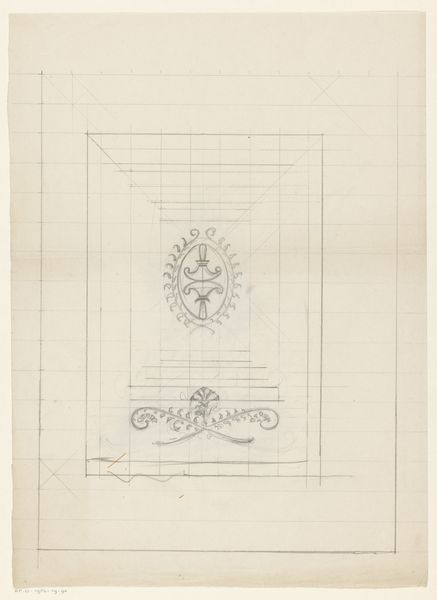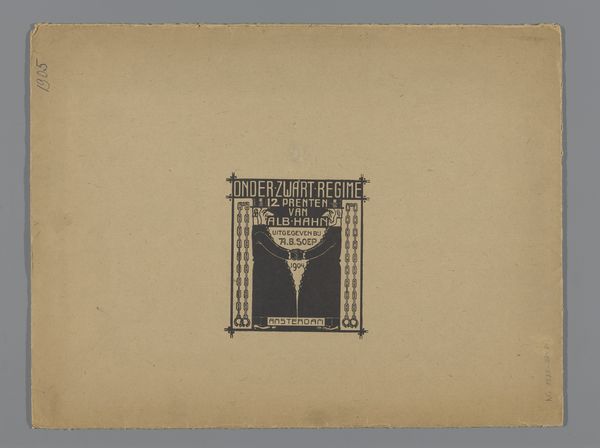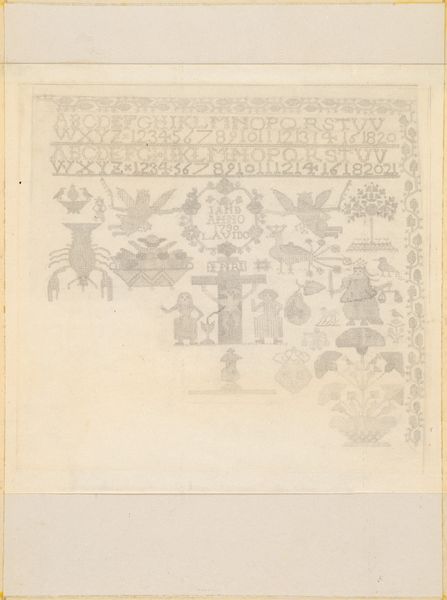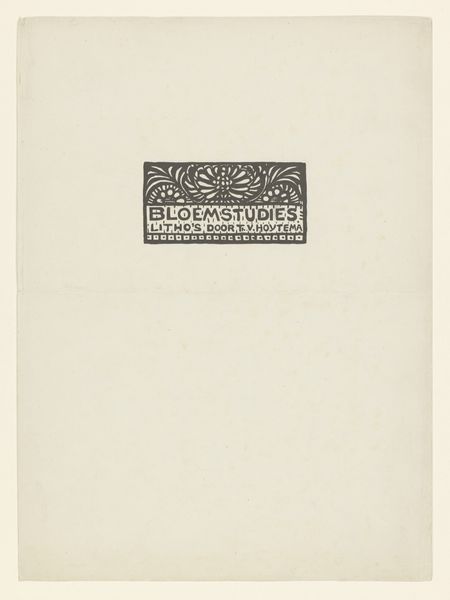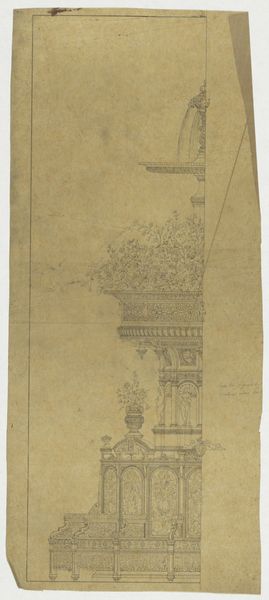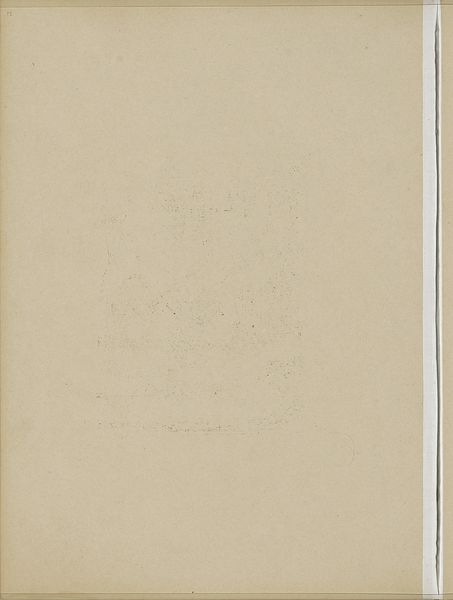
Ontwerp voor een briefhoofd voor het Victoria Hotel in Amsterdam 1935
0:00
0:00
#
aged paper
#
quirky sketch
#
old engraving style
#
etching
#
personal sketchbook
#
sketchwork
#
pen-ink sketch
#
sketchbook drawing
#
storyboard and sketchbook work
#
sketchbook art
Dimensions: height 256 mm, width 214 mm
Copyright: Rijks Museum: Open Domain
Curator: At first glance, there's a fragile elegance to this piece, a sense of history captured on what appears to be aged paper. Editor: Indeed. What we have here is Reinier Willem Petrus de Vries's "Ontwerp voor een briefhoofd voor het Victoria Hotel in Amsterdam," created in 1935. It's a design sketch, likely ink on paper, intended for the hotel's letterhead. Curator: The layout is fascinating. There’s a strong sense of symmetry. The artist presents both textual and graphic elements—architectural renderings, logos, and meticulously lettered descriptions. How does that balance inform its functionality as stationery? Editor: Consider the period. In the 1930s, graphic design for hotels like the Victoria projected an image of modernity and sophistication. The letterhead design isn't merely functional; it's a statement, connecting the hotel to Amsterdam’s identity. Curator: The rendering of the cityscape above “Victoria-Hotel Amsterdam” feels particularly evocative, a stylistic snapshot of the city at the time. I notice some commercial text along each side describing services for tourism and commerce. Editor: Precisely. These practicalities merge with an aesthetic appeal, constructing an idealized view of the hotel and, by extension, Amsterdam, for its patrons. Look closely at the coat of arms centrally placed beneath the hotel’s name. Its careful inking contrasts beautifully with the sketchier building façades. Curator: I'm also drawn to the open space within the frame, those ruled lines below suggesting personal messages composed with this stationary, a way for guests to participate and extend this image beyond its commercial use. Editor: I agree. The piece oscillates between public proclamation and intimate correspondence. That balance is central to its historical importance, highlighting the interwoven social, economic, and cultural contexts shaping commercial art. Curator: Yes, it really provides an artifact to showcase a long-gone era in the hospitality industry. Editor: Ultimately, I see it as a quiet but impactful testament to how art serves as an important conduit between commerce, identity, and the human experience.
Comments
No comments
Be the first to comment and join the conversation on the ultimate creative platform.
